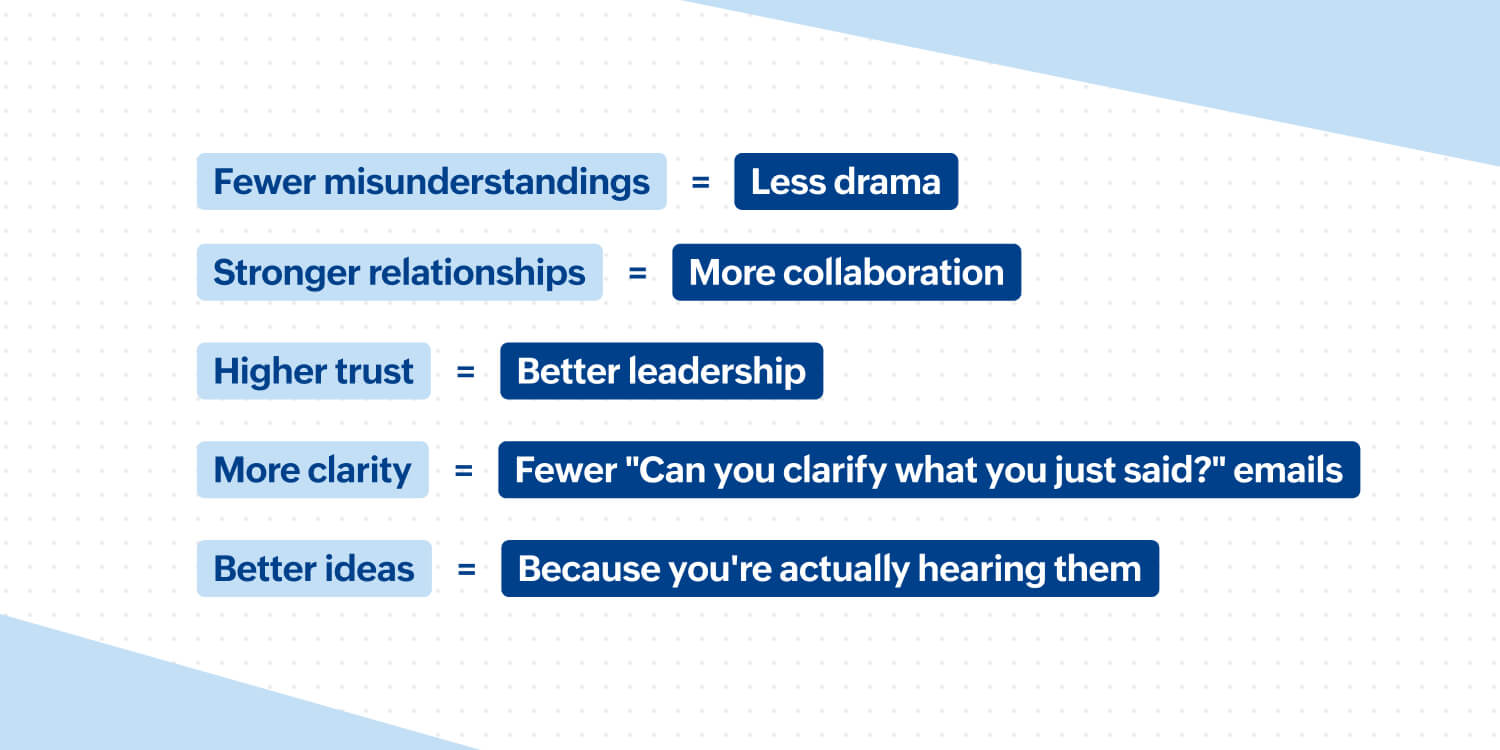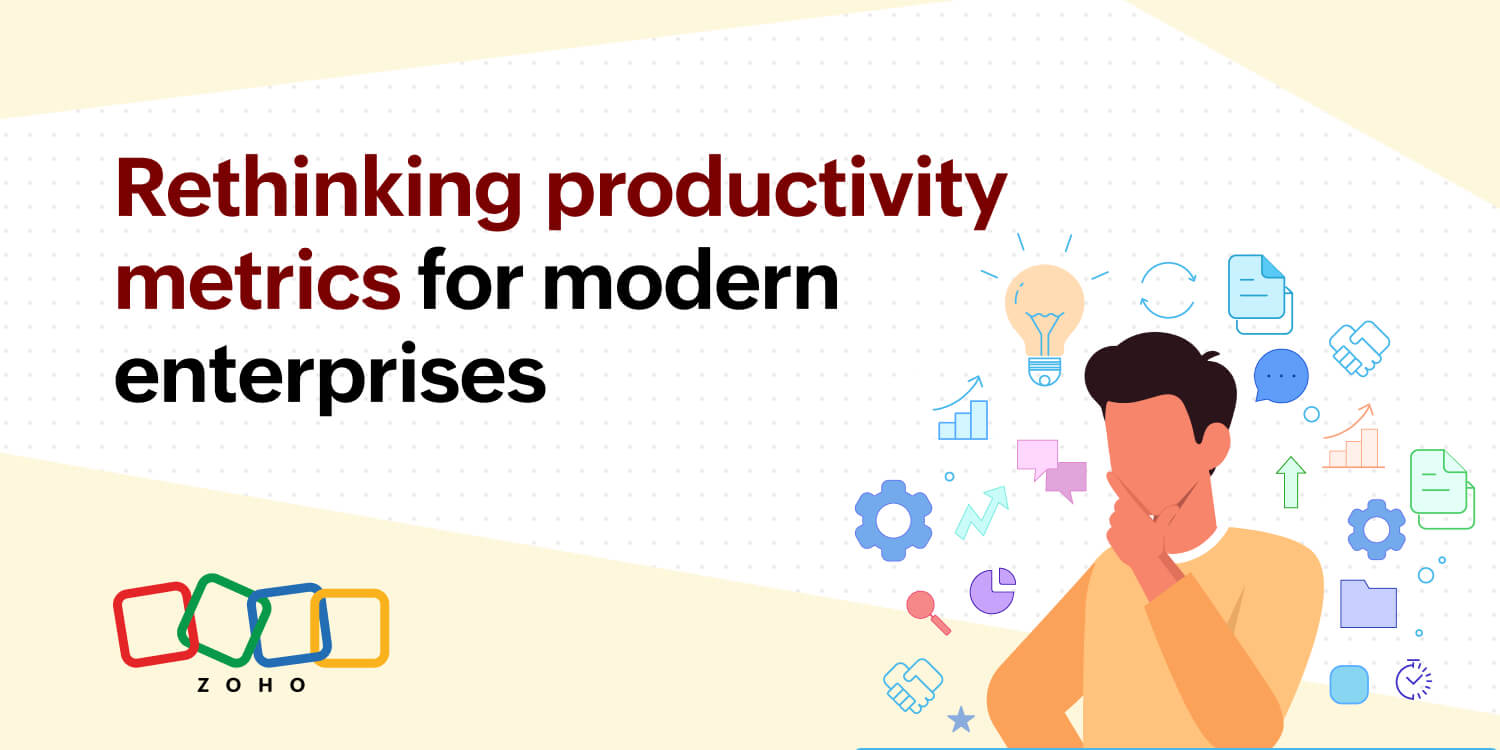- HOME
- All Topics
- Productivity in the workplace
- Active listening skills: Your underrated superpower at work
Active listening skills: Your underrated superpower at work
- Published : June 27, 2025
- Last Updated : June 27, 2025
- 509 Views
- 5 Min Read
Let’s get one thing out of the way: You think you’re a good listener. Of course, you nod, you say “uh-huh” at the right places, and you even throw in a “that makes sense” when you’re feeling generous. But here’s a truth that you may not like. There’s a good chance that you’re not really listening. Not actively. Not intentionally. And definitely not in a way that makes your colleagues feel heard.

In a workplace bursting with continuous pings, back-to-back meetings, multitasking madness, and an inbox that could legally be considered an overflowing dam, the art of active listening might just be your secret weapon.
What is active listening, anyway?
Imagine you're in a meeting. Someone says, “I think we should revisit the campaign timeline.” And instead of mentally drafting your grocery list or waiting for your turn to speak, you lean in literally and mentally. You pause, digest their words, note the tone, read between the lines, and then respond with intent.
That’s active listening. It’s not just hearing. It’s showing up with your ears, eyes, brain, and empathy fully present. Or to put it another way, it’s giving someone the rarest gift in today’s workplace—your undivided attention.
Why should you care?
Let’s be real. Your calendar is stuffed, your inbox has opinions, and your brain is bouncing between “Did I reply to that?” and “Do I really need this meeting?”
So why should you, of all people, make time to become an active listener? Simple. It gives you a strategic edge.
Because in a workplace where everyone’s talking, the person who actually listens stands out and wins.
So how does being a better listener help? Here’s what you gain when you level up your listening:

You’ll stop wasting time thinking what you misunderstood
Think about the last time a task went sideways because you thought you knew what was being asked, but you had missed the actual point. That “quick fix” turned into a two-hour detour, didn’t it?
Active listening gets you the right information the first time. More clarity, fewer follow-ups, and significantly less caffeine-fueled panic.
You’ll become the smartest person in the room (even if you're not)
Listening makes you smarter. When you actively absorb what your peers, clients, or managers are saying, you pick up on nuances others miss—subtext, roadblocks, hesitations, the things between the lines.
While everyone else is scrambling to speak, you’re collecting context. You see the big picture. And then, when you do speak, you'll only make sense.
You'll make people want to work with you
No one wants to collaborate with someone who steamrolls every conversation with their own opinions. But someone who really listens? That person becomes a magnet.
Your teammates will open up more. Cross-functional colleagues will loop you in early. Even that one skeptical stakeholder will soften.
Why? Because people want to feel heard, not managed. Active listening is how you build trust, and in a workplace, trust is currency.
You'll give and receive better feedback
Ever notice how feedback sessions can turn into awkward monologues or defensive debates? Active listening flips that.
When you really hear someone’s perspective without cutting them off, trying to fix things, or deflecting, you create a space for genuine growth. And when you listen actively while receiving feedback, you come across as a coachable, self-aware, and reliable individual.
Examples of how you can put effective listening to practice
Let's assume you've understood the concept of active listening. It’s powerful, elegant, and somehow always the most important person in the room. But now you’re probably thinking: “Okay, but how exactly do I become an active listener? Do I start meditating? Or enroll in an improv class?”
Nope. You don’t need a mindfulness retreat or a psychology degree. You just need to do a few small things differently in your day-to-day conversations—whether you’re in a boardroom, a 1:1 meeting, or stuck in a Zoom call.
The good news? Active listening isn’t hard.
The great news? Most people around you aren’t doing it. So this is a good chance for you to put it into practice and stand out.
So let’s break it down. Just follow a few simple, practical, and doable ways to become the kind of person people love talking to.
Pretend your ears are on a stage
Okay, not literally. But imagine your ears are the lead actors, and your mouth is waiting backstage for a cameo.
In the office, there’s always the temptation to speak, fix, advise, or interrupt with your brilliant opinion. But try and hold off. Resist the urge to jump in.
Try this: The next time someone is talking, mentally repeat their words in your head. It forces you to stay tuned in and shuts down that monologue you were rehearsing.
Give visual proof you're awake
Active listening is also physical. Slouching with dead eyes and a slack jaw? Not the vibe. Show you're listening—even if you’ve been on Zoom for six hours and your soul left your body at noon.
Try this: Nod occasionally, maintain eye contact (but not the creepy kind). And use small affirmations like “I see,” “Go on,” or “Interesting.”
These are subtle cues that say, “I’m with you,” not “I’m thinking about leftover pizza.”
Ask. Don’t assume.
Maybe your teammate said, “I’m not sure this plan will work,” and you instantly heard criticism. But maybe they’re just worried about a timeline clash. Active listening means clarifying before reacting.
Try asking questions like:
- “Can you walk me through what you mean?”
- “So what you’re saying is…?”
- “Just to clarify, are you concerned about X?”
These aren’t robotic scripts. They’re trust-building tools that make your coworker feel heard.
Paraphrase like a pro
This is where you play back what you heard—but in your own words. It’s not about parroting. It’s about showing that you genuinely get it.
Say something like: “So, if I understand right, you’re saying the current workflow slows things down because approvals take too long?”
Boom. Confirmation, connection, and clarity—all in one line.
Be the kind of listener you would rant to
Think of the people you go to when you’ve had a terrible day at work. They don’t interrupt. They don’t say, “Here’s what I would do.” They just… listen. With their full face. With empathy. With patience.
Now be that person.
Here's what you can do: When a colleague is sharing, close the laptop. Put the phone away. Don’t multitask. Treat their voice like it matters, because it does.
Detect the emotion behind the words
People rarely say what they really mean. “I’m fine” could mean “I’m two passive-aggressive emails away from rage-quitting.”
So don’t just listen for content—listen for emotion. Watch their tone, pace, and body language.
Try this: If someone’s talking fast or sounds unusually clipped, ask gently, “You seem a bit stressed. Want to talk about it?” You’re not overstepping; you’re showing you care.
TL;DR–but read it anyway
- Active listening is intentional. Not automatic.
- It involves your ears, brain, body, and empathy.
- In the workplace, it’s your most underrated power move.
- It builds better conversations, stronger teams, and smarter decisions.
- And yes, it may just make you someone people love to work with.
The final word
You don’t need to be a therapist or a mindfulness guru to master active listening. You just need to do something that’s increasingly rare: slow down, be present, and care about what’s being said.
Because when you become the kind of person who really listens, people will notice. They’ll open up. They’ll collaborate better. They’ll trust you more.
In a world full of noise, that kind of quiet power speaks volumes.
 Anjana Balaji
Anjana BalajiAnjana is a passionate marketer who works for Zoho. Apart from the crazy movie buff that she is, she's also a trained musician and a creative home-chef!


